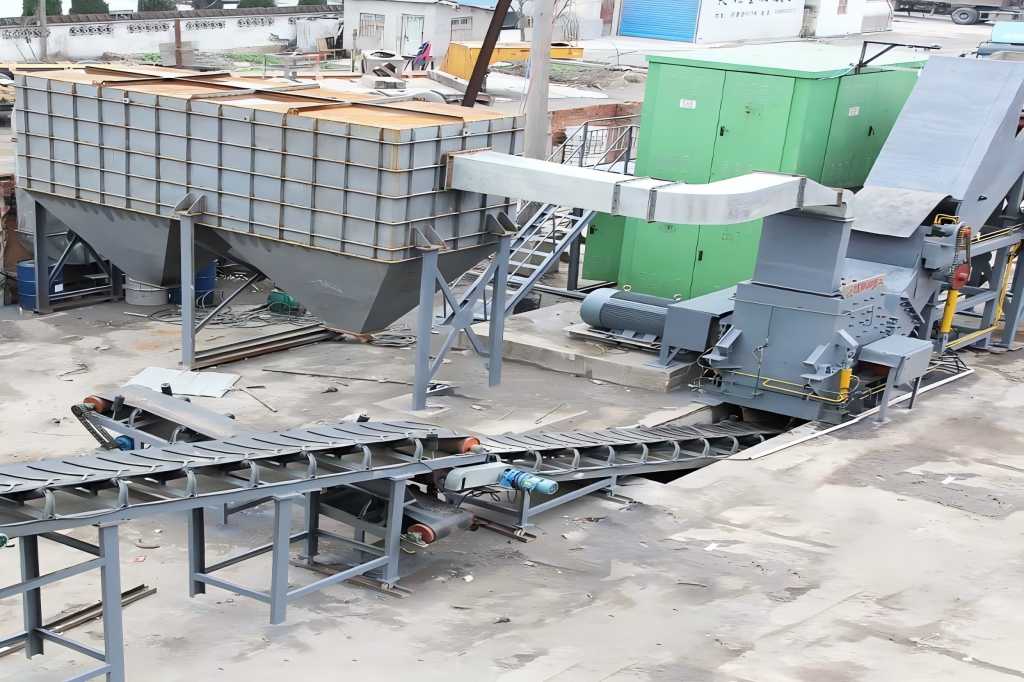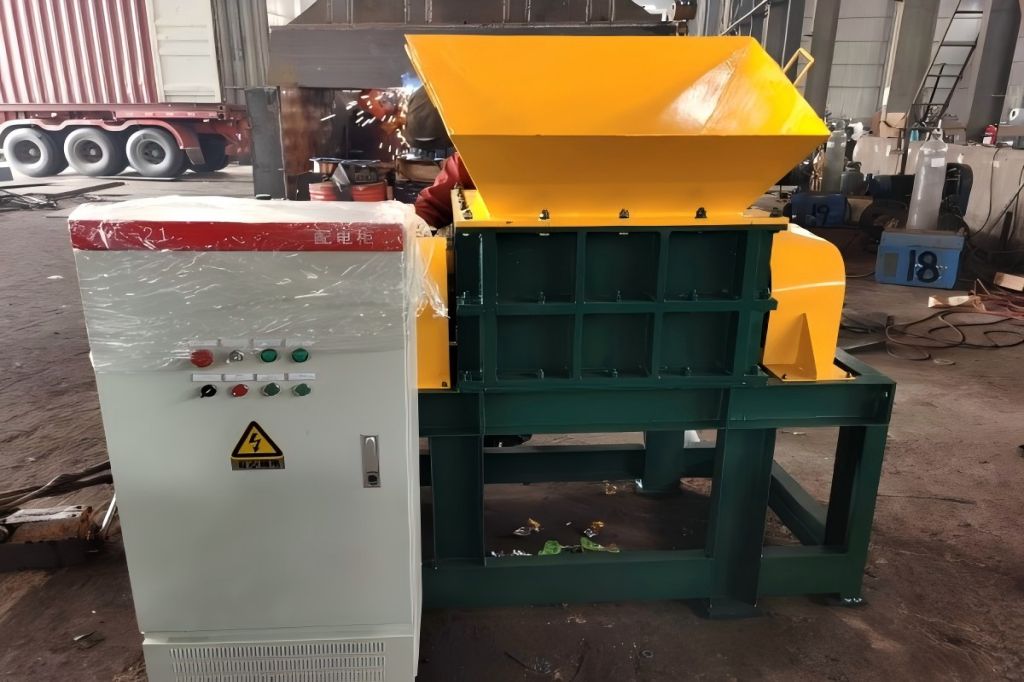In today’s environmentally conscious world, efficient waste management is more important than ever. A horizontal baler is a key piece of machinery that can optimize recycling processes, improve productivity, and reduce costs.
This guide will help you choose the best horizontal baler for your recycling needs by going over all the important factors.
What is a Horizontal Baler?
A horizontal baler is a device used to compress recyclable materials into small bales, such as cardboard, paper, plastic, and metals. This facilitates handling and transportation in addition to saving space.
Unlike vertical balers, horizontal balers are equipped to process high volumes of material efficiently and continuously, making them ideal for large recycling centers and industries.
The machine compresses materials into tight bales using hydraulic pressure. These bales are then tied and ejected for storage or transport. Horizontal balers are typically equipped with automated or semi-automated systems to reduce manual labor and improve operational efficiency.
Materials commonly processed in horizontal balers include:
- Cardboard and paper
- Plastic containers and bottles
- Steel and aluminum cans
- Textiles and fabric waste
- waste components
Horizontal balers are essential for businesses striving to manage their recycling efficiently while minimizing costs and environmental impact.
Types of Horizontal Balers
When choosing a horizontal baler, understanding the different types available can help you make the right decision for your operation.
Manual Horizontal Balers
Manual horizontal balers require significant operator input for loading materials, tying bales, and ejecting finished bales. These balers work well in low-volume or small-business settings. While they are cost-effective, they may not be practical for facilities with high recycling demands.
Semi-Automatic Horizontal Balers
Semi-automatic balers combine some automated features, such as a conveyor feed system, with manual intervention for tying and removing bales. They are ideal for mid-sized operations that require more processing capacity but still want to maintain cost-efficiency.
Fully Automatic Horizontal Balers
These are the most advanced horizontal balers and require minimal human interaction. They handle the entire process, including loading, compressing, tying, and ejecting bales.Fully automated balers are made for high-volume applications where speed and efficiency are essential.
Closed-End Horizontal Balers
Closed-end balers provide enhanced compression, making them suitable for facilities that need dense, compact bales. These are often used for materials like aluminum or other dense recyclables.
Two-Ram Horizontal Balers
Two-ram balers have two compression rams—one for pre-compression and one for baling. They can handle a variety of materials without the need for pre-sorting, which making them extremely adaptable. They are ideal for facilities dealing with diverse waste streams.
Mobile Horizontal Balers
For operations requiring flexibility, mobile horizontal balers are mounted on trailers or wheels, allowing easy relocation. These balers are ideal for on-site waste management or temporary recycling setups.
Important Considerations for Selecting a Horizontal Baler
When selecting a horizontal baler for your recycling needs, there are several key factors to keep in mind:
Material Type
Different balers are designed for different materials. If your operation deals with mixed waste, a two-ram baler may be suitable, whereas if you’re focusing on specific recyclables like cardboard or plastic, a closed-end or semi-automatic baler may be a better option.
Bale Size and Density
Consider how compact and uniform you need the bales to be. For more dense bales, closed-end balers provide stronger compression. For larger or lighter materials, a semi-automatic or two-ram baler may be more appropriate.
Throughput and Efficiency
Throughput is the amount of material that the baler can process in a specific amount of time.Fully automatic balers are best for high-volume needs, while manual and semi-automatic models may be better suited for smaller operations with lower throughput requirements.
Energy Consumption
Energy efficiency is crucial for reducing operational costs. Consider the energy consumption of the baler, as more automated models may use more energy, but provide higher efficiency for larger operations.
Space and Size Requirements
The physical size of the baler is another important consideration. Ensure that the machine fits within the available space in your facility and that the bale size and output meet your storage or transportation needs.
Maintenance and Service
All machines require maintenance. Choose a baler that’s easy to maintain and has readily available parts. Fully automatic balers may require more specialized servicing, while manual or semi-automatic models might be easier to repair.
Benefits of Horizontal Balers in Recycling Operations
Horizontal balers offer numerous benefits that contribute to the efficiency and profitability of recycling operations:
Improved Efficiency
By compressing materials into compact bales, horizontal balers help maximize storage space, reduce handling time, and make the transportation of materials more efficient.
Cost Savings
Compact bales take up less space in both storage and transport, reducing the overall cost of disposal. Additionally, the increased throughput of fully automatic balers can reduce labor costs.
Enhanced Safety
Baling materials reduces the amount of loose waste in the facility, minimizing potential hazards. Baled materials are easier to stack, manage, and transport, which leads to a safer work environment.
Sustainability
Horizontal balers contribute to environmental sustainability by facilitating the recycling of materials, reducing waste, and helping companies meet sustainability targets.How to
Maintain Your Horizontal Baler
Proper maintenance is essential to keep your horizontal baler running efficiently and to extend its operational life. To maintain your machine in top condition, take these actions:
Regular Inspections
Check the hydraulic systems, belts, and general condition of the baler regularly to ensure no parts are worn or damaged. Check for wear indicators such as hydraulic system leaks.
Lubrication
Ensure that all moving parts are adequately lubricated to reduce friction and wear. Regarding the type and frequency of lubrication, according to the manufacturer’s instructions.
Cleaning
Clean the machine regularly to avoid material buildup in the compaction chamber, feed system, and discharge area. A clean baler is more efficient and less likely to encounter mechanical issues.
Hydraulic System Maintenance
Since most horizontal balers use hydraulics for compression, keeping the hydraulic fluid at the right level and replacing it as recommended by the manufacturer is crucial for smooth operation.
Scheduled Servicing
Plan for regular servicing, either by in-house technicians or a professional service provider, to catch potential problems before they cause costly breakdowns.
Choosing the Right Horizontal Baler Manufacturer
Choosing a reliable and experienced baler manufacturer is just as important as selecting the right baler type. Take into account these elements:
Standing and Proficiency
Choose a manufacturer who has a solid track record and industry experience. The more expertise they have, the more capable they will be of assisting you in choosing the best baler and offering continuing assistance.
Consumer Service
In addition to training, technical assistance, and access to spare parts, be sure the manufacturer provides exceptional customer service. Quick response times and support availability are critical for minimizing downtime.
Customization Options
If your facility requires a custom solution, consider working with a manufacturer that offers flexible, customizable balers designed to meet your specific needs.
Guarantee and Upkeep
A strong warranty and post-purchase care will safeguard your investment and provide you peace of mind. Verify the warranty’s terms and what is covered by it.
Conclusion
Choosing the right horizontal baler is key to improving efficiency, safety, and sustainability in recycling. By considering material type, throughput, space, and energy needs, you can select the ideal baler. Regular maintenance and a reliable manufacturer will ensure long-term success, helping you streamline operations, reduce costs, and support sustainability.




